|
One of the most important aspects of Patient-Centered Medical Home is the systematic discussion of end-of-life decisions with patients, but that, particularly in primary care, has to go beyond code status (whether the patient wants to be resuscitated or not) and whether you want to be placed on a ventilator. It must also include the appropriate recommendation of Hospice Care, not only for cancer patients, but for patients with a number of other medical conditions which limit a person's longevity. Part of the complexity in this process is an objective standard for hospice eligibility, potential length of survival, etc. Hospice agencies use four scales to assess a patient's eligibility. They are:
- Karnofsky & Lansky Performance Scales
- Palliative Performance Scale for Cancer Patients
- Braden Scale Clinically Unavoidable Skin Lesions
- Functional Assessment Testing Alzheimer’s and Related Conditions
SETMA has deployed these four computations to aide in this important process. In addition to Hospice eligibility, number one is helpful in establishing the potential for readmission of patients discharged from the hospital. And number four is an excellent tool of assessment the functional status of patients with dementia.
As end-of-life planning becomes increasingly an important part of patient care, it is important to find ways of quantifying patient’s qualification for hospice care and where possible, a means of quantifying a reliable estimate of survival time for patients. While there will never be an absolute, four scores are being used to aid in this process. The first, the Karnofsky Scale, was first described in 1949; the second, the Palliative Performance Scale has been used in cancer patients since 1996; the third the Braden Clinically Unavoidable Skin lesions and the fourth Functional Assessment Testing Alzheimer’s and Related Conditions (FAST).
SETMA has deployed all four of these scores, along with a fifth which is the Lansky Scare. The Lansky is like the Karnosky Scale but is used with patients under 16. These tools can be found by going to GP Master Template. In the second column you will find these four scales. They are also deployed on the Master Template in the Hospital Care Summary and Post Hospital Plan of Care and Treatment Plan Suite of templates.
These only need to be completed in patients you are considering referral to hospice care or palliative care. However, both the Karnofsky and the FAST have value in assessing those patients who are at high risk of readmission.
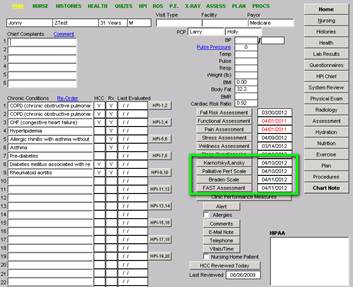
A Karnofsky score of 60 or less qualifies a patient for referral to hospice. Below, the SETMA’s EMR templates there are more details about both scales.
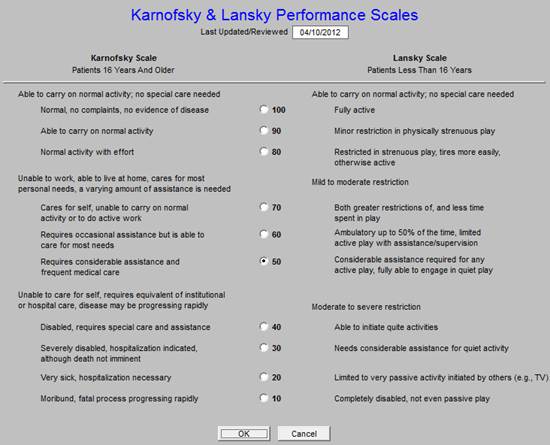
The Palliative Performance Scale for Cancer Patients is found on the same template. This score’s results are expressed in “survival time from the point of admission to hospice.” The evidence-based literature has only measured this scale in the case of patients with cancer. Further information is found below about this scale.
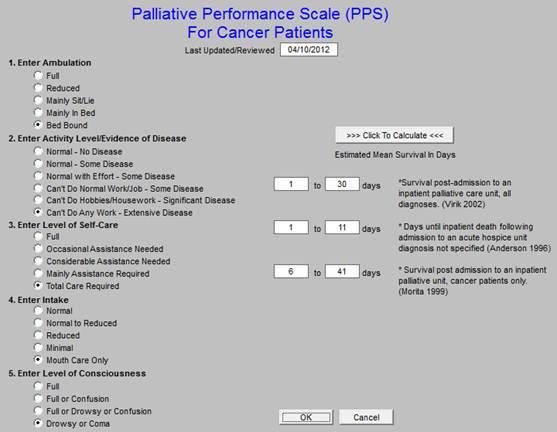
The Braden Score was developed in 1988 and has been used by SETMA in the Nursing Home patients since 2002. The Braden is based on 6 categories of evaluation and gives a score which indicates whether or not the patient is susceptible to clinically unavoidable skin lesions.

A tutorial for this basement can be reviewed under Electronic Patient Management Tools: Nursing Home
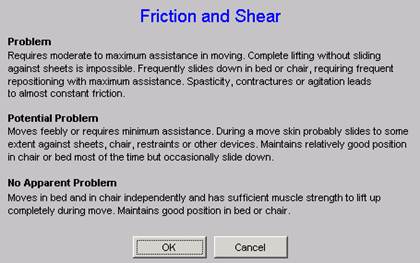
The fourth tool is the Functional Assessment Testing (FAST) Alzheimer’s and Related Disorders. This tool is also valuable to use for cognitive functioning of patients with dementia but who are either not hospice eligible or not being considered for hospice.
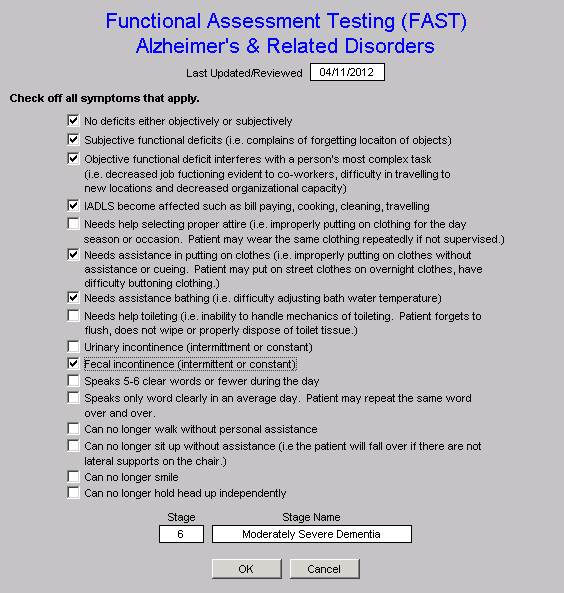
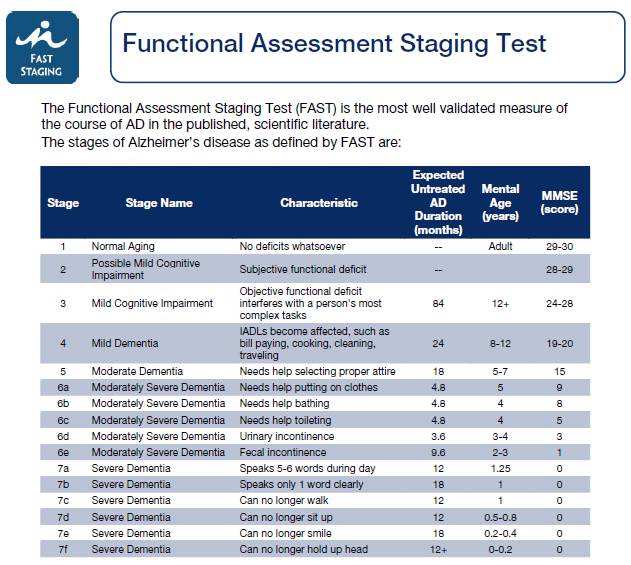
- To be eligible for hospice beneficiaries with Alzheimer’s disease must have a FAST Scale of greater than or equal to 7. FAST Scale Items:
Stage 1: No difficulty, either subjectively or objectively
Stage 2: Complains of forgetting location of objects; subjective work difficulties
Stage 3: Decreased job functioning evident to coworkers; difficulty in traveling to new locations
Stage 4: Decreased ability to perform complex tasks (e.g., planning dinner for guests, handling finances)
Stage 5: Requires assistance in choosing proper clothing
Stage 6: Decreased ability to dress, bathe, and toilet independently;
Sub-stage 6a: Difficulty putting clothing on properly
Sub-stage 6b: Unable to bathe properly; may develop fear of bathing
Sub-stage 6c: Inability to handle mechanics of toileting (i.e., forgets to flush, does not wipe properly)
Sub-stage 6d: Urinary incontinence
Sub-stage 6e: Fecal incontinence
Stage 7: Loss of speech, locomotion, and consciousness:
Sub-stage 7a: Ability to speak limited (1 to 5 words a day)
Sub-stage 7b: All intelligible vocabulary lost
Sub-stage 7c: Non-ambulatory
Sub-stage 7d: Unable to sit up independently
Sub-stage 7e: Unable to smile
Sub-stage 7f: Unable to hold head up
- Documentation of specific secondary conditions (i.e. Pressure Ulcers, UTI, Dysphagia, Aspiration Pneumonia) related to Alzheimer’s Disease will support eligibility for hospice care.
|